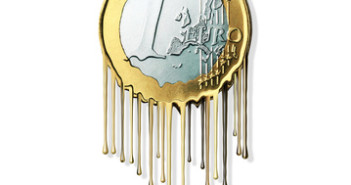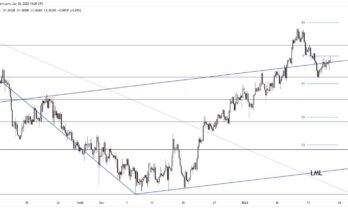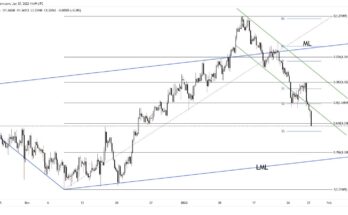Guarded sentiment prevailed throughout the majority of yesterday’s trading session, with key macro-event risks keeping participants from adding too much exposure to high-yielding asset classes.  The S&P flipped-flopped between positive and negative values before finally ending the day slightly higher than Friday’s close, just under the 1,940 mark. The geopolitical situation in Iraq combined with the FOMC meeting on Wednesday kept protection well-bid, as the VIX and S&P decoupled from their usual negative correlation with the fear-index also posting a positive print, up 0.47 vols on the cash contract. The USD was under pressure earlier on, exhibiting an offer tone after the IMF cut US growth forecasts for 2014 and said that if inflation stays muted the FOMC could keep rates near zero past mid-2015. The cautious outlook from the international organization will likely keep participants from straying too far ahead of the FOMC interest rate decision on Wednesdayof this week, with investors keenly awaiting how the Fed’s assessment of the domestic economic landscape lines up with that of the IMF.
The overnight Asian session was a mixed-bag in terms of risk appetite, with the Nikkei squeezing out a 0.3% gain while the Shanghai Comp shed almost a full percent from its valuation. The Aussie has been a notable under-performer in the FX space today, struggling to keep afloat after the minutes from the last Reserve Bank of Australia policy meeting showed the central bank was slightly more uncertain about the future economic outlook, hinting to markets the easing cycle may not be over. The reiteration of the domestic currency remaining high by historical standards was nothing new in terms of rhetoric from the RBA, but didn’t help the overall tone of the minutes and has pushed AUDUSD in the mid-0.93s, off almost half a percent.
Midway through the European session sees equities exhibiting cautious optimism, with the major bourses dipping their toes into the green ahead of the North American cross. A weak reading on the assessment of future expectations towards German economic sentiment as reported by the ZEW institute was not enough to push the EUR materially lower, giving the impression that a lower move in ZEW instituteto re-test the 1.35 handle will have to come from a more hawkish FOMC policy announcement tomorrow. The expectations reading for the ZEW survey drop from the 33.1 registered in May to 29.8 in June, far below the 35.0 which had been forecast by analysts; though the current situation component saw a nice bump from 62.1 to 67.7, and has helped take some of the sting out of the report. The EUR is slightly lower against the big dollar this morning, but has managed to hold its ground in the mid-1.35s.
Across the pond, soft inflation figures from the British economy have halted Sterling’s recent winning streak, with prices showing there may be some excess slack in the economy that still needs to be absorbed. The y/o/y rise of 1.5% (vs. expectations of a 1.7% increase) represent a four year low, and combined with the sluggish pace of wage increases witnessed last week, should give Governor Carney slightly more breathing room to keep rates at low levels. Although the hawkish camp in the Bank of England is growing larger and it is not a given the minutes from the last MPC meeting will show unanimous approval to keep interest rates unchanged, an absence of input pricing stresses and the downward pressure exhibited on CPI as a result of competitive food prices have Pound traders cautious ahead oftomorrow’s release. Cable is marginally softer before the North American open, but has failed to give up too much ground and is currently trading in the high-1.69s. Another failed attempt to capture the 1.70 handle should there be a deficiency of hawkish commentary intomorrow’s minutes could lead to a capitulation for some of the weaker Sterling bulls, and thus corporates that are long-GBP heading into the announcement might want to think about covering off some exposure; strategies that incorporate some upside optionality so participation in a continuation of the rally is not completely lost would be something worth considering given the current market dynamics.
As we get set for the North American session, a deluge of US data just hit the wires, providing market participants with some colour ahead of the FOMC policy announcementtomorrow. Analysts had been expecting the headline CPI reading to remain anchored at the 2.0% handle for the month of May, yet the official print came in with a 2.1% increase. Though the FOMC prefers to use the PCE reading as it’s preferred measure of inflation, today’s consumer price levels do show there are some upside pricing pressures ebbing through the economy, with the core reading also beating expectations to come in with a 2.0% increase. It will be interesting to see if the FOMC does look to raise its inflation projections when it updates its economic forecasts tomorrow, and how that plays into the dot chart of interest rate projections from the board members.
Also on the docket this morning were the release of Building Permits and Housing Starts for the American economy during May, both of which were forecast to ease slightly from the levels registered in April. After IMF Managing Director Christine Lagarde said that the housing industry could be a drag on US growth over the remainder of the year, market participants were closely watching to see how the leading indicators were progressing, and what the flow-through affects could mean for consumer demand after the soft print for May was witnessed last week. Both permits and starts came in lower than analysts had been expecting, printing at 0.99M and 1.00M respectively, corroborating the assessment from Lagarde that the housing industry in the US is easing and GDP growth won’t be able to rely as heavily on consumer demand in the coming quarters.
The combination of higher inflation and weaker housing statistics has pushed S&P futures into the red ahead of the opening bell, with the DXY generating a pop on the hotter than expected inflation reading. The Loonie is slightly weaker against the big dollar heading into the open, with USDCAD heading back into the high-1.08s after getting hit by both a pessimistic outlook for the Aussie and a stronger USD. The consumer price climate in the US has also lead to a sell-off in fixed income, with the 10-year yield rocketing to 2.63%.
With central banks dominating the economic docket tomorrow, there is potential for financial markets to see some volatility return to what has been a fairly stable June. Despite the IMF’s somber outlook towards economic growth in the US for 2014, we still think the greater risk for tomorrow’s FOMC meeting is a more optimistic assessment and a dot chart that signals rate hikes might be slightly earlier than participants have priced into their models. Though the DXY has slipped from it’s failed run at 81 earlier in June, the upward trend is still in-tact, so if support in the low-80s can hold, corporates that are naturally short the USD (relative to other developed currencies like the Euro and Loonie) may want to discuss strategy execution with their dealing teams heading intotomorrow’s announcement.
Further reading:
Get the 5 most predictable currency pairs



